This dairy free egg free sweet potato pie is light, fluffy, and incredibly easy to make!
Where pumpkin pie is the beloved fall dessert of the North, sweet potato pie is a favorite in the South.
This makes sense, since sweet potatoes are local to the southern states where pumpkins are native to the North East.
I've heard sweet potato pie fans say the best pumpkin pie is a sweet potato pie, and no doubt it is a wonderful Thanksgiving dessert.
Of course, I think that if someone doesn't like pumpkin pie, it's because they haven't tasted my dairy free egg free pumpkin pie.
This is a pretty darn good dairy free egg free sweet potato pie! You won't be able to tell that it is not a regular sweet potato pie, but it's even easier to make and a little extra creamy too.
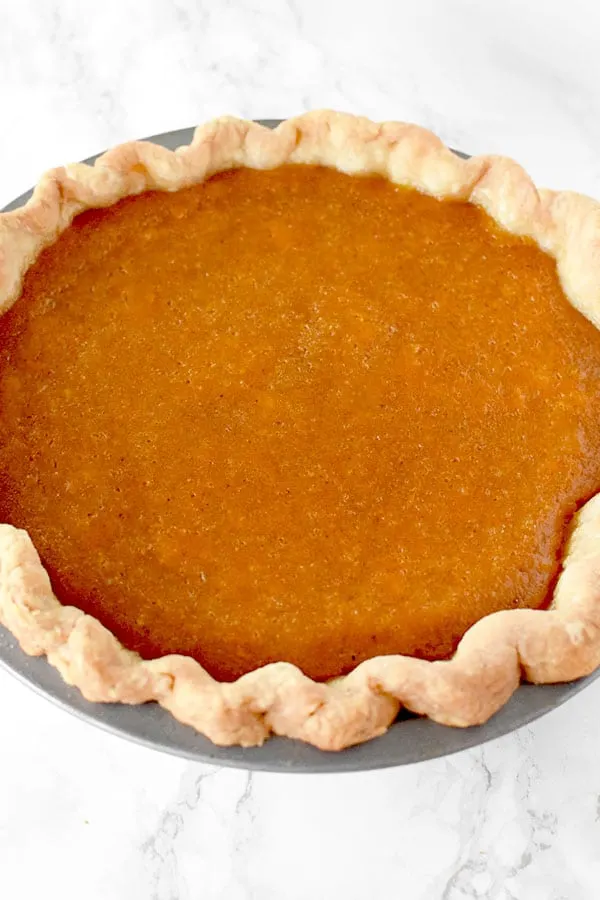
History of Sweet Potato Pie
Sweet potato pie was created in the Southern United States during the colonial period. Recipes for sweet potato pie first appeared in printed cookbooks in the 1700s.
Funny enough, sweet potato pie was originally categorized with savory vegetable dishes, but by the 1800s it was considered a dessert like we know it today.
Blind Baking The Crust
Blind baking is a technique used to help prevent the crust from becoming soggy and has a crisp texture.
How to Blind Bake a crust
- Cover the crust in the pie pan with baking paper or tin foil
- Fill it with pie weights, sugar, beans, or pennies and bake at 375°F or 190°C for 30 minutes
- Remove the filling and bake for another 10 minutes to brown the bottom
HOW TO REPLACE EGGS IN BAKING
Eggs do three things in most recipes: they help bind the ingredients together, act as a mild leavening agent, and they add moisture.
So, to replace them, the ideal options do all three and do not impact flavor or texture.
While there are other ways to replace eggs in baking, these are the ones that I think are the best:
Applesauce
Unsweetened applesauce is my favorite way to replace eggs in baking.
It barely, if at all, affects the flavor and is easy to find in grocery stores.
Using ¼ cup (about 65 grams) of applesauce can replace an egg in most recipes.
Vinegar and baking soda
Mixing 1 teaspoon (7 grams) of baking soda with 1 tablespoon (15 grams) of vinegar can replace 1 egg in most recipes.
According to Healthline, when mixed together, vinegar and baking soda start a chemical reaction that produces carbon dioxide and water, which makes baked goods light and airy.
This substitute works best for cakes, cupcakes, and quick breads.
Arrowroot powder or cornstarch
A mixture of 2 tablespoons of arrowroot powder or cornstarch and 3 tablespoons of water can be used to replace 1 egg.
Aquafaba
"Aquafaba" is the term for the leftover liquid from cooking beans or legumes and is the same liquid that’s found in canned chickpeas or beans.
The liquid has a very similar consistency to that of raw egg whites, making it a great substitute for many recipes.
You can use 3 tablespoons (45 grams) of aquafaba to replace 1 egg.
Carbonated water
Carbonated water can add moisture to a recipe and acts as a great leavening agent.
The carbonation traps air bubbles, which help make the finished product light and fluffy. This works great for cakes, cupcakes, and quick breads.
You can replace each egg with ¼ cup (60 grams) of carbonated water.
MICROWAVING THE SWEET POTATO
To save a lot of time you can microwave the sweet potato instead of boiling it.
Wash sweet potatoes thoroughly, pat dry, and poke 3 or 4 times with a fork. Then microwave 5 minutes.
If your potato isn’t fork tender after 5 minutes, continue microwaving in 30 second increments until done.
WHY USE AN ELECTRIC MIXER
Using an electric mixer will help you get a smoother filling by breaking up the clumps. It also helps catch the little fibrous strings that must be removed through a blending process.
Sugar
The primary role of sugar is to be a sweetener. However, sugar also contributes to the tenderness and moistness of the baked good by absorbing and retaining moisture and helps create the golden brown color when baking as it caramelizes.
Recipes with more sugar often result in softer, moister textures. However, I learned the hard way that too much sugar leads to a sticky mess.
When it's heated, sugar caramelizes, resulting in a rich, complex flavor and a brown color. This adds both flavor and color to baked goods and is also the process in which caramel sauce, dulce de leche, caramel candies, and regular candies are made.
When used in recipes containing yeast, the sugar is eaten by the yeast, producing carbon dioxide and causing the dough to rise.
Sugar also acts as a preservative in jams, jellies, and fruit preserves by reducing water activity and preventing microbial growth.
There are many different types of sugar, including white sugar, brown sugar, vanilla sugar, powdered sugar, turbinado sugar, and demerara sugar.
When a recipe calls for “sugar” without specifying anything else, it's referring to regular white sugar.
White Sugar
White sugar (sometimes called granulated sugar, table sugar, or white granulated sugar) is made of either beet sugar or cane sugar, which has undergone a refining process.
It is the easiest to find and most commonly used.
Brown Sugar
Brown sugar is white sugar with molasses added to it.
It is commonly used in chocolate chip cookie recipes, and it’s rare for a recipe that calls for brown sugar not to also call for white sugar as well.
When a recipe calls for “brown sugar” but doesn’t specify what type (light or dark), it is referring to light brown sugar.
In my recipes, you can use whatever type of brown sugar you have on hand, whether it is dark brown sugar, light brown sugar, or demerara sugar - which is very common in Israel.
Just keep in mind that the flavor and color will be slightly different, depending on what you choose to use.
Turbinado Sugar
Turbinado sugar is better known as "raw sugar." But, despite this name, the sugar is not really “raw.”
Instead, it's partially refined sugar that retains some of the original molasses.
The term "raw sugar" may also give off the impression that it is somehow healthier.
In reality, turbinado sugar is nutritionally similar to white sugar.
Demerara Sugar
Demerara sugar is very popular in Israel and is especially delicious in tea, but is also used for baking.
Unlike white sugar, demerara sugar undergoes minimal processing and retains some vitamins and minerals.
However, it is still not much healthier than white sugar.
Vanilla Sugar
Vanilla sugar is not very common in the States. However, it is common in Israel and parts of Europe.
This is sugar that sat for an extended period of time with vanilla beans, giving it a vanilla flavor.
Caster Sugar
This type of sugar is common in the United Kingdom.
It has a grain finer than white (granulated) sugar and larger than powdered sugar.
Caster sugar is often called for in recipes for delicate baked goods like meringues, souffles, and sponge cakes.
You can use a 1:1 conversion rate between caster sugar and white (granulated) sugar.
Powdered sugar
Powdered sugar, sometimes known as confectioners’ sugar, is a sugar with a powdered texture.
This sugar is rarely used for baking. Instead, it is used for dusting desserts and making frosting, icing, and glazes.
In some countries, you can also find powdered vanilla sugar.
It is made the exact same way regular vanilla sugar is made. However, the sugar used is powdered instead of granulated.
Vanilla Extract vs Vanilla sugar
In my recipes, I don’t specify what kind of vanilla to use.
The reason for this is that in the States, vanilla extract is exclusively used.
Meanwhile in Israel, along with many European countries, vanilla sugar is common.
In most, if not all recipes, both vanilla extract and vanilla sugar can be used.
In recipes where vanilla sugar can be used instead of extract, you can replace them 1:1.
Replacing Sugar with Honey
If you’d prefer to use honey instead of sugar, you can do so with pretty good results.
Honey can be two or even three times as sweet depending on the honey, so for every 1 cup of sugar, you can use ½ to ⅔ cup honey.
Since honey adds liquid, you need to remove some to balance it out. For every cup of honey, remove a ¼ cup of liquid.
Also, it burns faster than granulated sugar, so you want to lower the baking temperature by 25 F. In addition, check it early and often to avoid burning or overbaking.
How to Store Sugar
Sugar should be stored in an airtight container to prevent clumping and moisture absorption, and kept in a cool, dry place.
Types of Vanilla
Vanilla comes from a pod commonly known as a “vanilla bean”, which comes from the vanilla orchids.
Vanilla pods have been used for flavoring since the Aztecs and was introduced to Europe by a Spanish conquistador, along with cocoa.
Vanilla Extract
Vanilla extract is created by soaking vanilla beans in alcohol for some time. This is the most commonly used type of vanilla.
Vanilla Sugar
Vanilla sugar is common in Europe and some parts of the Middle East, like Israel.
It is made from vanilla beans sitting in sugar, vanilla bean powder mixed with sugar, or sugar mixed with vanilla extract.
In some countries, like Italy, you can also find vanilla powdered sugar, which is used for confections.
Vanilla Paste
Vanilla paste is generally a specialty item. It is a thick paste that contains a blend of the scraped-out vanilla pod seeds and vanilla extract.
You can use it as you do vanilla extract and it will leave flakes of vanilla bean like you see in vanilla bean ice cream.
Imitation Vanilla
Imitation Vanilla, otherwise known as artificial vanilla or vanilla essence, is made from synthetic vanilla.
This is the compound that naturally occurs in vanilla beans and gives it its flavor.
Can I use imitation vanilla?
Many will tell you that you should use high quality vanilla, just like they say you should use the best cocoa.
However, most of us will probably not be willing to pay the hefty price that comes with exceptionally high-quality ingredients.
Overall, vanilla is very expensive, so the extract is as well.
So, if you’re not going to get regular quality vanilla extract, you might as well use imitation vanilla.
Can vanilla extract be used as a substitute for vanilla beans?
Yes, vanilla extract can be used as a substitute for vanilla beans. Use about 1 teaspoon of vanilla extract for each inch of vanilla bean.
How to Store Vanilla
Pure vanilla extract and other vanilla products should be kept away from heat and light, and should be stored in an airtight container in a cool, dark place.
Adjusting for a Convection Oven
Convection ovens blow the hot air around, producing around 25 to 30 percent more heat.
Since convection ovens produce more heat, you need either lowering the temperature or shortening the cooking time to compensate.
When recipes specify temperatures and cooking times, it’s for conventional ovens, unless specified otherwise.
A simple rule to follow is to lower the temperature by 25ºF or 14ºC when baking cookies and pies, and 50ºF or 28ºC when roasting meat and poultry. Some convection ovens offer separate settings for baking and for roasting.
You can also leave the temperature the same and instead, shorten the cooking time by 25 percent. For example, if your recipe calls for 60 minutes in the oven, check the food after 45 minutes instead.
However, keep in mind, some convection ovens actually make a heat adjustment for you. That is, if you set a convection oven for 350ºF, it might actually set itself to 325ºF to compensate. So, check your manual before making adjustments.
MAKING AHEAD OF TIME
The filling for dairy free egg free sweet potato pie can be made a day in advanced. In fact, doing so allows the flavor of the spices to develop.
Freshly baked sweet potato pie, will keep for about 3 to 4 days if covered and refrigerated.
TROUBLESHOOTING
WHY IS IT TAKING LONGER THAN DESCRIBED TO BAKE?
Over time, the thermostat on ovens gets a little off, causing some ovens to run hot and others to run cool.
This is why recipes tend to say things like “10 to 15 minutes or until golden brown.”
So, if it takes you longer than expected, that’s fine, don’t worry about it. Just keep baking until ready.
WHY DID MY RECIPE COME OUT TOO DRY?
Just like some ovens run cool, others run hot. If your oven runs hot, bake these at a lower temperature.
Ideally, you should get an oven thermometer to know what temperature you’re really baking at.
CAN IT BE STORED AT ROOM TEMPERATURE?
No. It has a custard filling, so it needs to be refrigerated.
HOW TO STORE
Let cool to room temperature. Cover loosely with plastic wrap or foil. Refrigerate for up to 3 to 4 days.
HOW TO FREEZE
Let the dairy free egg free sweet potato pie cool to room temperature. Wrap in plastic wrap until tightly sealed. Then wrap in a layer of aluminum foil.
If you do not have plastic wrap and aluminum foil, place it in a resealable freezer bag.
Place on a level freezer shelf and freeze for up to 1 to 2 months. After this, the pie is still safe to eat but the quality begins to degrade.
DEFROST
When you are ready to defrost the pie, transfer it to the refrigerator. Let thaw for at least 12 hours.
Dairy Free Egg Free Sweet Potato Pie
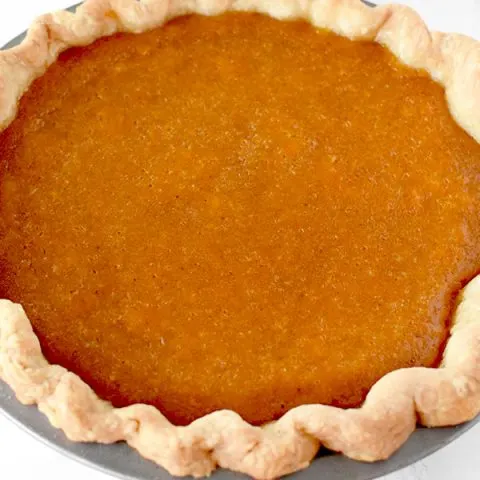
This dairy free egg free sweet potato pie is light, fluffy, and incredibly easy to make! It tastes just as good as a non vegan sweet potato pie, but it's even easier to make and a little extra creamy too.
Ingredients
- 1 pound sweet potatoes
- ½ cup unsweetened coconut milk
- ⅓ cup oil
- 1 teaspoon vanilla extract
- ½ teaspoon lemon extract, optional
- 1 cup sugar
- ½ teaspoon ground nutmeg
- ½ teaspoon ground cinnamon
- ¼ teaspoon salt
- 1 9-inch unbaked pie crust
- 6 tablespoons water
- ¼ cup cornstarch, potato starch, or arrowroot
Instructions
- Boil sweet potato whole in skin for 40 to 50 minutes, or until done. You know it's done when you're able to pierce at least half way through it with ease.
- Run cold water over the sweet potato. Remove the skin and mash the sweet potatoes in a bowl.
- Add oil, sugar, coconut milk, vanilla, lemon, nutmeg, cinnamon and salt. Mix using an electric mixer until combined and smooth.
- Preheat oven to 350˚F or 175˚C.
- Place starch in a seperate bowl. Slowly mix in water to make a slurry.
- Pour slurry into sweet potato mixture and mix until well incorporated.
- Pour filling into an unbaked pie crust. Bake for 55 to 60 minutes or until the center sets.
Recommended Products
Some of the links below are affiliate links, which means that if you choose to make a purchase, I will earn a small commission. This commission comes at no additional cost to you.
-
 Hamilton Beach 6-Speed Electric Hand Mixer with Snap-On Storage Case, Wire Beaters, Whisk and Bowl Rest, 250W, White (62682RZ)
Hamilton Beach 6-Speed Electric Hand Mixer with Snap-On Storage Case, Wire Beaters, Whisk and Bowl Rest, 250W, White (62682RZ) -
 Metal Nonstick 9” Pie Pans
Metal Nonstick 9” Pie Pans -
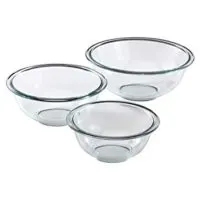 Pyrex Glass Mixing Bowl Set, 3-Piece
Pyrex Glass Mixing Bowl Set, 3-Piece -
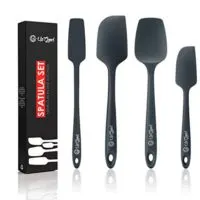 UpGood Silicone Spatula, Set of 4
UpGood Silicone Spatula, Set of 4 -
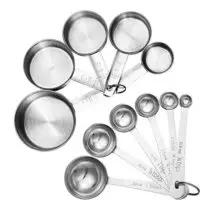 Accmor Stainless Steel Measuring Spoons and Cups Set
Accmor Stainless Steel Measuring Spoons and Cups Set -
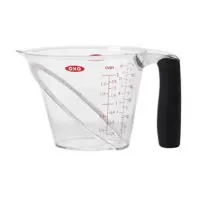 OXO Good Grips 2-Cup Angled Measuring Cup
OXO Good Grips 2-Cup Angled Measuring Cup
Nutrition Information:
Yield:
8Serving Size:
1Amount Per Serving: Calories: 305Total Fat: 11gSaturated Fat: 2gTrans Fat: 0gUnsaturated Fat: 9gCholesterol: 0mgSodium: 125mgCarbohydrates: 49gFiber: 3gSugar: 31gProtein: 2g